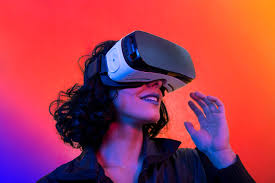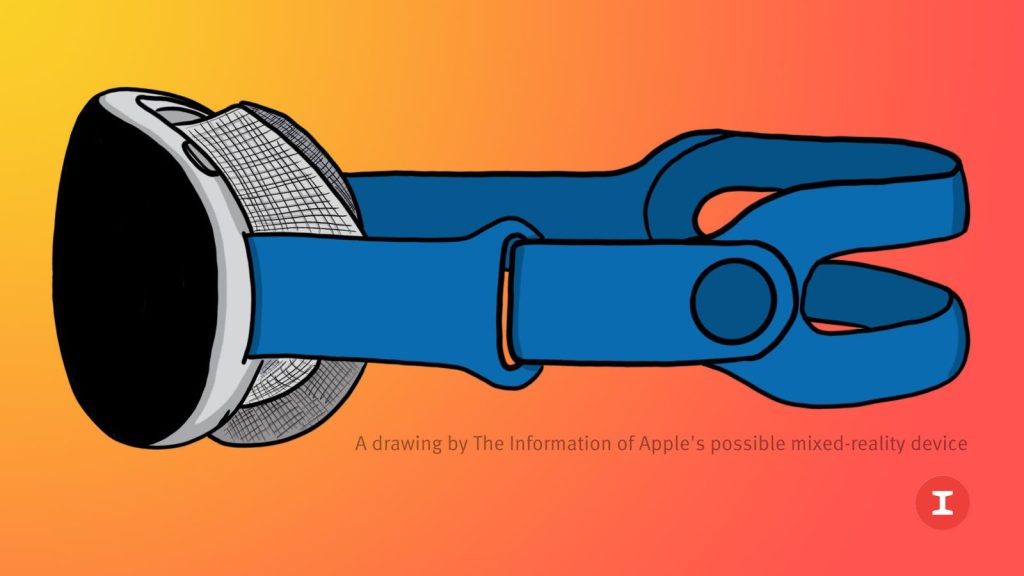In the latest news from Apple, we can expect to see their first launch with AR/VR technology. With the popularity of AR/VR devices, it’s no shock Apple want a slice of the action. For almost 20 years Apple have been experimenting with augmented and virtual reality and now we can anticipate their first wearable AR/AV device in 2023.

After many delays, with the initial launch being set for back in 2022, we hope Apple has been perfecting the technology. The AR/VR headset will be equipped with Apple silicon chips, putting the device’s performance on par with Apple’s Macs. It will have two chips inside which will allow it to perform complex tasks and handle the virtual reality capabilities while also operating independently of an iPhone or Mac. It will be possible to pair an iPhone and use it as a keyboard and to transfer data but won’t be necessary.
DESIGN
Regarding its design, the headset will look similar to other headsets on the market but will feature a sleeker look and a lightweight build to ensure comfort. It uses an external battery pack that is worn at the waist rather than an integrated battery built into the device to reduce the weight of the device. In addition, to keep it light the headset will use aluminium, glass, and carbon fibre. Prototypes from March 2022 weighed around 200 to 300 grams, but Apple is aiming to reduce the final weight to 100 to 200 grams.
Rumour suggests it has a sleek, curved visor attached to the face by a mesh material. For those familiar with the Apple Watch, the band in the back of the headset will be similar in material of that device. The peripheral vision of the wearer will be blocked to prevent light from leaking into the wearer’s field of view, and there will be an outward-facing display for showing graphics to others On the right side of the device, you will find a small Digital Crown-like dial that will allow the wearer to transition between virtual reality and the physical world.

WHAT TO EXPECT
Along with eye tracking, Apple is installing more than a dozen cameras into the headset to track hand movements and gestures. The user will be able to look at an item on the display to select it, using hand gestures to then interact with the item. Moreover, the wearer will have an immersive viewing experience with the addition of two high-resolution 4K micro-OLED displays with up to 3,000 pixels per inch.
Included will be multiple 3D-sensing modules that detect hand gestures and objects that are around the wearer. It will support voice control, skin detection, expression detection, and spatial detection. There will be built-in speakers, but for better spatial audio Apple require the device to be paired with AirPods.
Specifically for the headset, Apple is designing an App Store and content will focus on gaming, streaming video, and video conferencing. Also, a new operating system, “xrOS” has been developed. Interestingly, a FaceTime experience will use the cameras to project a person’s full face and body into a virtual environment for one-on-one calls. Other standard apps like Mail and Safari will be available also.
Much like Apple’s iPhones and iPads, the headset will have an iOS-like interface, with a dedicated Home Screen that houses an array of apps and widgets. It will also be able to be used as a display for a connected Mac, with the Mac’s mouse and keyboard used as input devices.
The discourse on pricing estimates the headset to be available for $3000/ £2,400. It is aimed more at developers, content creators, and professionals, rather than at the general consumer. Because of this, Apple says they anticipate the sale of only one headset per day in stores. Later second-generation headsets can be expected to be more reasonably priced with the everyday customer in mind. We knew the cutting-edge technology wasn’t going to be cheap, but do you think it sounds worth its hefty price tag?
Apple may not think so itself. In recent news, the New York Times has been approached by several Apple employees voicing their concerns over the headset’s usefulness and price point.
Due to doubts about the device’s potential, some Apple employees have defected from the project and others have been fired over lack of progress with some of the device’s functionality, including Siri. Even those in leadership at Apple have questioned the device’s prospects.
Could this be a waste of time and money for Apple? The consensus from general consumers is that it’s too niche and the price point is too high. They’d rather Apple target their resources into fixing bug issues and extending battery life. Apple is no stranger to scepticism, so let’s hope they have done their research and that this isn’t the start of a dark age.